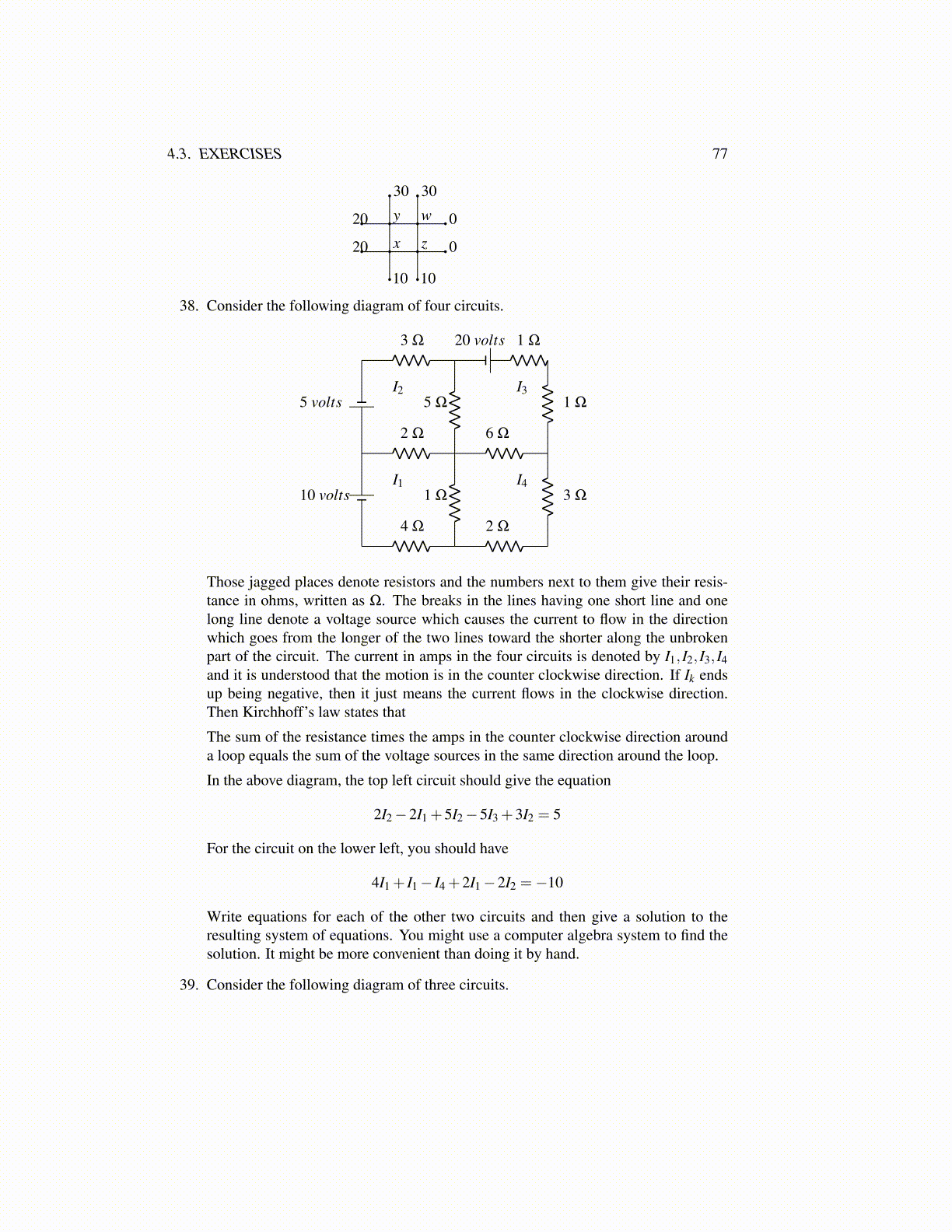
4.3. EXERCISES 77
1010
20
20 x
y
z
w
3030
0
0
38. Consider the following diagram of four circuits.
10 volts
5 volts
20 volts3 Ω
2 Ω
4 Ω
1 Ω
6 Ω
2 Ω
5 Ω 1 Ω
3 Ω1 Ω
I1
I2 I3
I4
Those jagged places denote resistors and the numbers next to them give their resis-tance in ohms, written as Ω. The breaks in the lines having one short line and onelong line denote a voltage source which causes the current to flow in the directionwhich goes from the longer of the two lines toward the shorter along the unbrokenpart of the circuit. The current in amps in the four circuits is denoted by I1, I2, I3, I4and it is understood that the motion is in the counter clockwise direction. If Ik endsup being negative, then it just means the current flows in the clockwise direction.Then Kirchhoff’s law states that
The sum of the resistance times the amps in the counter clockwise direction arounda loop equals the sum of the voltage sources in the same direction around the loop.
In the above diagram, the top left circuit should give the equation
2I2−2I1 +5I2−5I3 +3I2 = 5
For the circuit on the lower left, you should have
4I1 + I1− I4 +2I1−2I2 =−10
Write equations for each of the other two circuits and then give a solution to theresulting system of equations. You might use a computer algebra system to find thesolution. It might be more convenient than doing it by hand.
39. Consider the following diagram of three circuits.